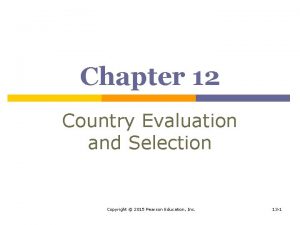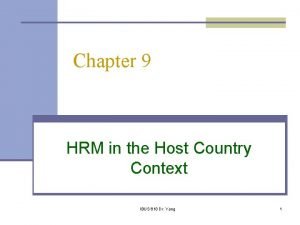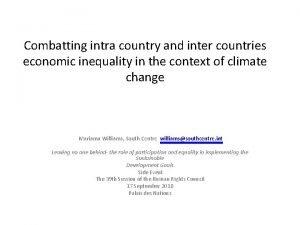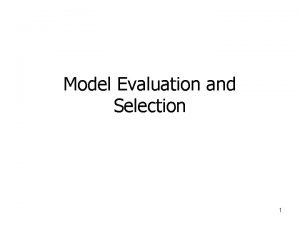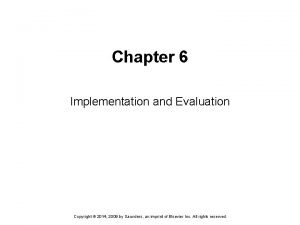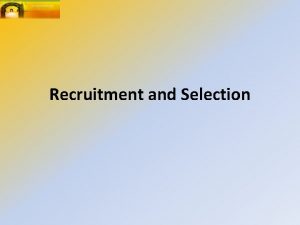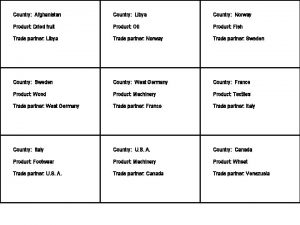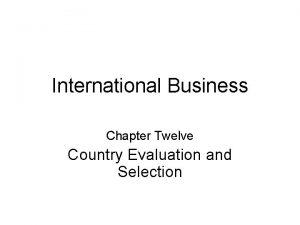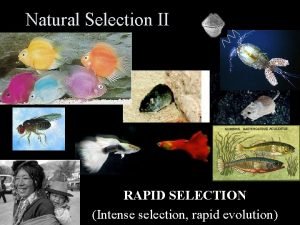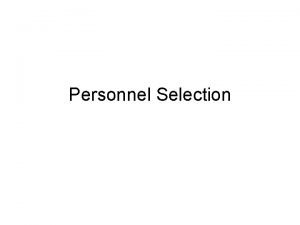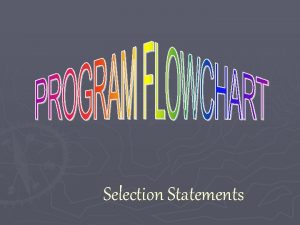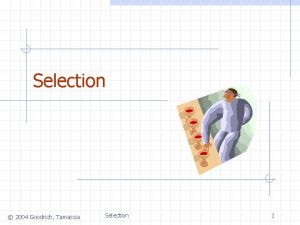Chapter 12 Country Evaluation and Selection Copyright 2015


















- Slides: 18

Chapter 12 Country Evaluation and Selection Copyright © 2015 Pearson Education, Inc. 13 -1

Learning Objectives Grasp company strategies for sequencing the penetration of countries p See how scanning techniques can help managers both limit geographic alternatives and consider otherwise overlooked areas p Discern the major opportunity and risk variables to consider in deciding whether and where to expand abroad p Know the methods and problems of collecting and comparing international information p Copyright © 2015 Pearson Education, Inc. 13 -2

Learning Objectives Understand some simplifying tools for helping decide where to operate p Consider how companies allocate emphasis among the countries where they operate p Comprehend why location decisions do not necessarily compare different countries’ possibilities p Fathom the conditions that may cause prime business locations to change in the future p Copyright © 2015 Pearson Education, Inc. 13 -3

Introduction p When making country selection decisions companies must consider Where to locate sales, production, and administrative and auxiliary services n The sequence for entering different countries n The portion of resources and efforts to allocate to each country where they operate n Copyright © 2015 Pearson Education, Inc. 13 -4

Introduction The Location – Decision Process Copyright © 2015 Pearson Education, Inc. 13 -5

How Does Scanning Work? p Step 1: n p Scanning p comparing country information that is readily available, inexpensive, and fairly comparable Step 2: n Onsite visits Copyright © 2015 Pearson Education, Inc. 13 -6

What Information Is Important in Scanning? p Opportunities n n Sales expansion p obsolescence and leapfrogging of products, prices, income elasticity, substitution, income equality, cultural factors and taste, existence of a trading bloc Cost consideration p labor, infrastructure, ease of transportation and communications, governmental incentives and disincentives Copyright © 2015 Pearson Education, Inc. 13 -7

What Information Is Important in Scanning? p Risks n Political risk p analyzing past patterns, analyzing opinions, examining social and economic conditions n Foreign exchange risk p exchange rate changes, mobility of funds n Competitive risk p making operations compatible, spreading risk, following competitors of customers, heading off competition Copyright © 2015 Pearson Education, Inc. 13 -8

Collecting and Analyzing Data p Problems with data n Inaccurate information n Non-comparability n Limited resources n Misleading data n Reliance on only legal and reported market activities n Poor research methodology Copyright © 2015 Pearson Education, Inc. 13 -9

Collecting and Analyzing Data p Where can companies collect data? n Sources of information p External § government agencies, specialized services, and trade associations p Internal § Observation and questionnaires Copyright © 2015 Pearson Education, Inc. 13 -10

Country Comparison Tools p Analyzing data n Grids p may depict acceptable or unacceptable conditions p rank countries by important variables n Matrices p decide on indicators and weight them p evaluate each country on the weighted indicators Copyright © 2015 Pearson Education, Inc. 13 -11

Country Comparison Tools Simplified Market-Penetration Grid Copyright © 2015 Pearson Education, Inc. 13 -12

Country Comparison Tools Opportunity-Risk Matrix Copyright © 2015 Pearson Education, Inc. 13 -13

Allocating Among Locations p Allocating n Alternative gradual commitments n Geographic diversification versus concentration n Reinvestment versus harvesting Copyright © 2015 Pearson Education, Inc. 13 -14

Alternative Gradual Commitments The Usual Patterns of Internationalization Copyright © 2015 Pearson Education, Inc. 13 -15

Geographic Diversification versus Concentration p Diversification strategy n p Concentration strategy n p go to many markets fast and then build up slowly in each go to one or a few markets and build up fast before going to others A hybrid of the above two Copyright © 2015 Pearson Education, Inc. 13 -16

Geographic Diversification versus Concentration Diversify or Concentrate: The Role of Product and Market Forces Copyright © 2015 Pearson Education, Inc. 13 -17

Reinvestment and Harvesting p Reinvestment n p making new commitments to maintain competitiveness Harvesting n reducing commitments because they do not fit the overall strategy or because there are more attractive alternatives Copyright © 2015 Pearson Education, Inc. 13 -18
 Country evaluation and selection
Country evaluation and selection Copyright 2015 all rights reserved
Copyright 2015 all rights reserved Copyright 2015 all rights reserved
Copyright 2015 all rights reserved Host country and home country
Host country and home country Intra country vs inter country
Intra country vs inter country Model evaluation and selection
Model evaluation and selection Two way selection and multiway selection in c
Two way selection and multiway selection in c Multiway selection
Multiway selection Procedure of pure line selection
Procedure of pure line selection Source selection plan
Source selection plan Balancing selection vs stabilizing selection
Balancing selection vs stabilizing selection Similarities
Similarities K selection r selection
K selection r selection Natural selection vs artificial selection
Natural selection vs artificial selection Difference between continuous and discontinuous variation
Difference between continuous and discontinuous variation Stabilizing selection
Stabilizing selection K selection r selection
K selection r selection Natural selection vs artificial selection
Natural selection vs artificial selection Chapter 6 implementation and evaluation
Chapter 6 implementation and evaluation
